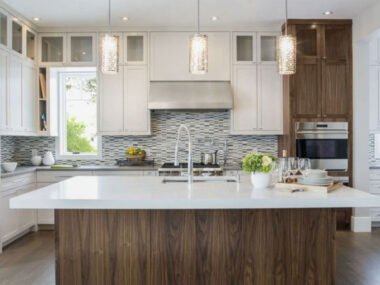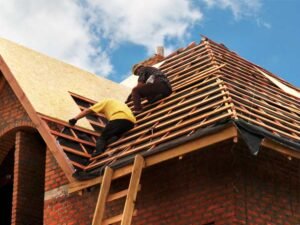Maintaining a healthy home environment requires attention to many factors, and one of the most critical yet often overlooked elements is the roof’s condition. A roof is the first defense against external elements such as rain, snow, and humidity. When the roof is damaged, old, or compromised, moisture enters the home’s structure, creating the perfect conditions for mold and mildew growth. Mold and mildew not only affect the aesthetic appeal of a home but also pose serious health risks to the occupants. We will explore how roof replacement is a powerful measure to prevent the growth of these harmful fungi, protecting the building’s structure and the well-being of its residents.
How Roof Replacement Helps Prevent Mold and Mildew Growth
Stopping Water Intrusion Through a Secure Barrier
One of the primary causes of mold and mildew is moisture penetrating the home’s interior. Over time, roofing materials can deteriorate due to exposure to harsh weather, temperature fluctuations, and natural wear and tear. Cracked, curled, or missing shingles create gaps through which water can seep. If you want to learn how to identify these issues early, check here for helpful signs to watch for. If left unattended, even minor leaks allow moisture to accumulate in hidden spaces like attics, walls, and ceilings.
This dampness creates an environment conducive to mold spores, which are microscopic and naturally present in the air. Once spores find moisture, they can quickly establish colonies, causing damage to surfaces and materials. Roof replacement ensures the installation of a fresh, continuous, and watertight barrier that prevents water intrusion. Using updated materials and proper installation methods reduces the likelihood of leaks, effectively cutting off one of the primary causes of mold growth.
Enhancing Ventilation to Manage Moisture Levels
Poor ventilation in attic spaces contributes significantly to mold and mildew problems. Even without direct leaks, moisture can build up inside the roof structure from everyday household activities such as cooking, bathing, and breathing. This moisture rises and becomes trapped in the attic, condensing on cold surfaces like roof sheathing and rafters. Condensation is especially common in winter when warm indoor air meets cold roof surfaces. Roof replacement is ideal for addressing ventilation issues by installing or upgrading vents such as ridge vents, soffit vents, or turbine vents. Improved airflow allows excess moisture to escape, keeping the attic dry and preventing mold from thriving in this dark, humid environment. Proper ventilation also helps regulate temperature, reducing condensation and the potential for fungal growth.
Upgrading to Mold-Resistant Roofing Materials
Roofing technology has evolved significantly, and many modern roofing materials offer better resistance to mold, algae, and mildew. Materials such as synthetic underlayments, treated shingles, and metal roofing often have properties that inhibit fungal growth. When replacing a roof, homeowners can select these materials to protect against mold development. This choice protects the roof from surface mold and prevents spores from penetrating further into the home’s structure through compromised areas. Additionally, materials with better water-shedding capabilities reduce the time water stays on the surface, minimizing moisture exposure. Opting for mold-resistant materials during roof replacement is a proactive approach that helps maintain the roof’s durability and contributes to a healthier indoor environment.
Addressing Structural Damage to Prevent Hidden Mold
A leaking roof does more than just cause surface stains; it damages the home’s internal structure. Water that enters through the roof can soak into wooden beams, insulation, drywall, and other building components. Prolonged moisture exposure weakens these materials, reducing their ability to repel water and creating an inviting habitat for mold colonies. Mold that grows inside walls or ceilings is difficult to detect and can spread extensively before becoming visible. Roof replacement involves removing damaged roofing materials and often inspecting and replacing any compromised structural elements. This process helps to remove mold spores and damaged materials that may have developed over time. By restoring the roof’s integrity and repairing internal damage, roof replacement helps eliminate mold sources that are otherwise hidden and hard to treat.
Improving Indoor Air Quality and Protecting Occupant Health
Mold and mildew growth in a home can seriously impact the health of its occupants. Mold spores released into the air can trigger allergic reactions, respiratory problems, headaches, and fatigue. Those with pre-existing health conditions or weakened immune systems are especially vulnerable. By preventing mold growth through roof replacement, homeowners safeguard indoor air quality and create a safer living environment. A new roof that keeps moisture out and supports proper ventilation reduces the presence of airborne spores inside the home. In addition to physical health benefits, reducing mold presence protects the home’s value and appeal. A mold-free home is easier to sell or rent and demonstrates responsible property maintenance to potential buyers.
Roof replacement is vital in preventing mold and mildew growth by addressing the root causes of moisture intrusion, poor ventilation, and structural damage. Upgrading roofing materials, improving airflow, and restoring the roof’s protective barrier ensure a dry and healthy home environment. This proactive approach protects the structure, enhances indoor air quality, supports energy efficiency, and ultimately safeguards the health of occupants. Timely roof replacement is not just about aesthetics or property value—it is a crucial investment in the home’s longevity and the well-being of those who live within it.










